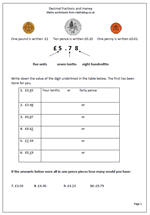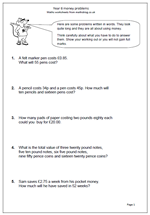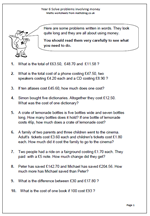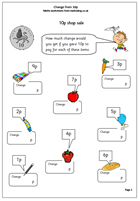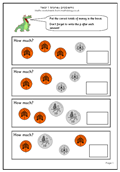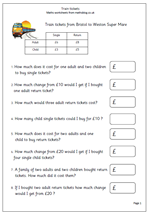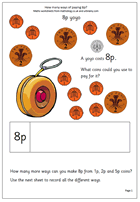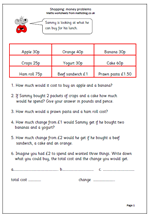 By year 3 children will be well acquainted with the pound and pence signs and should know that there are 100 pence in a pound. They should also be familiar with the way that we show money in pounds e.g. £2.34 where the decimal point separates whole pounds from pence and that the digits in first column after the pound sign represent 10ps and the second digit represents single pence.
By year 3 children will be well acquainted with the pound and pence signs and should know that there are 100 pence in a pound. They should also be familiar with the way that we show money in pounds e.g. £2.34 where the decimal point separates whole pounds from pence and that the digits in first column after the pound sign represent 10ps and the second digit represents single pence.
This worksheet looks at some simple addition of money using both pounds and pence and involves working out answers using more than one operation or process; this always makes it harder.
